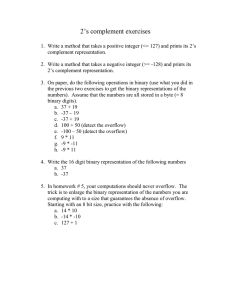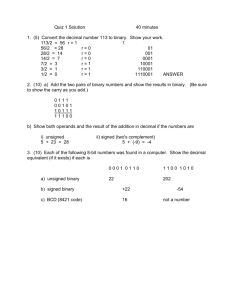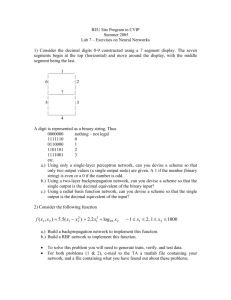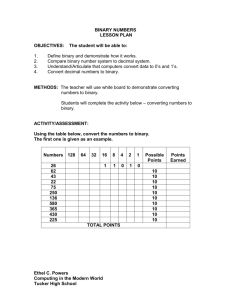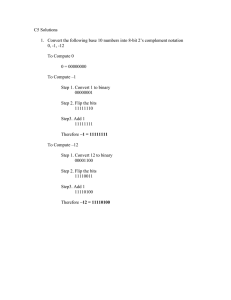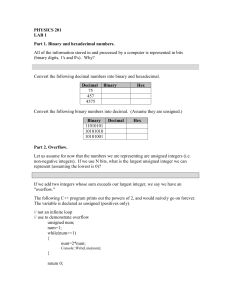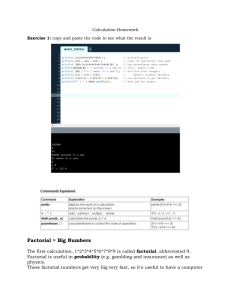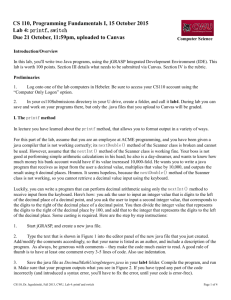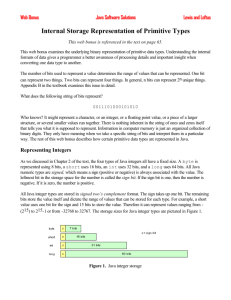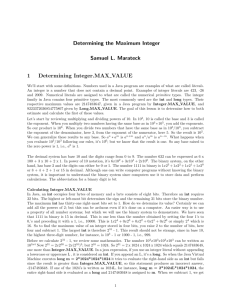Why integer overflow "wraps around"
advertisement
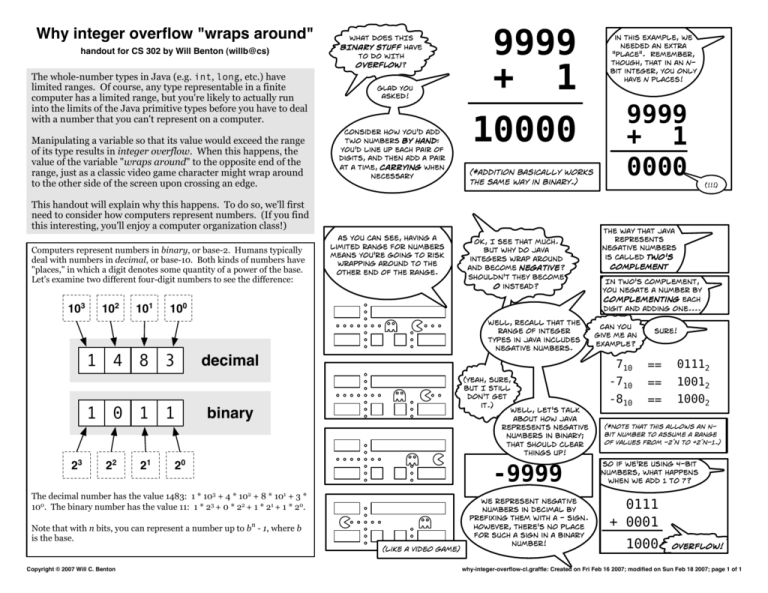
Why integer overflow "wraps around" handout for CS 302 by Will Benton (willb@cs) The whole-number types in Java (e.g. int, long, etc.) have limited ranges. Of course, any type representable in a finite computer has a limited range, but you're likely to actually run into the limits of the Java primitive types before you have to deal with a number that you can't represent on a computer. Manipulating a variable so that its value would exceed the range of its type results in integer overflow. When this happens, the value of the variable "wraps around" to the opposite end of the range, just as a classic video game character might wrap around to the other side of the screen upon crossing an edge. WHAT DOES THIS BINARY STUFF HAVE TO DO WITH OVERFLOW? GLAD YOU GLAD YOU ASKED! ASKED! consider how you'd add consider how you'd add two numbers by hand: two numbers by hand: you'd line up each pair of you'd line up each pair of digits, and then add a pair digits, and then add a pair at a time, carrying when at a time, carrying when necessary necessary 9999 + 1 10000 (*addition basically works the same way in binary.) This handout will explain why this happens. To do so, we'll first need to consider how computers represent numbers. (If you find this interesting, you'll enjoy a computer organization class!) Computers represent numbers in binary, or base-2. Humans typically deal with numbers in decimal, or base-10. Both kinds of numbers have "places," in which a digit denotes some quantity of a power of the base. Let's examine two different four-digit numbers to see the difference: 103 102 101 1 0 1 1 22 21 well, recall that the range of integer types in Java includes negative numbers. decimal (yeah, sure, but I still don't get it.) well, let's talk about how Java represents negative numbers in binary; that should clear things up! binary 20 -9999 The decimal number has the value 1483: 1 * 103 + 4 * 102 + 8 * 101 + 3 * 100. The binary number has the value 11: 1 * 23 + 0 * 22 + 1 * 21 + 1 * 20. Note that with n bits, you can represent a number up to bn - 1, where b is the base. (like a video game) Copyright © 2007 Will C. Benton OK, I see that much. But why do Java integers wrap around and become negative? Shouldn't they become 0 instead? 100 1 4 8 3 23 as you can see, having a limited range for numbers means you're going to risk wrapping around to the other end of the range. We represent negative numbers in decimal by prefixing them with a - sign. However, there's no place for such a sign in a binary number! in this example, we needed an extra "place". Remember, though, that in an nbit integer, you only have n places! 9999 + 1 0000 (!!!) The way that Java represents negative numbers is called TWO's COMPLEMENT IN two's complement, you negate a number by complementing each digit and adding one.... Can you give me an example? sure! 710 == 01112 -710 -810 == == 10012 10002 (*Note (*Note that that this this allows allows an an nnbit bit number number to to assume assume a a range range of of values values from from -2^N -2^N to to +2^N-1.) +2^N-1.) so if we're using 4-bit numbers, what happens when we add 1 to 7? 0111 + 0001 1000 Overflow! why-integer-overflow-cl.graffle: Created on Fri Feb 16 2007; modified on Sun Feb 18 2007; page 1 of 1
